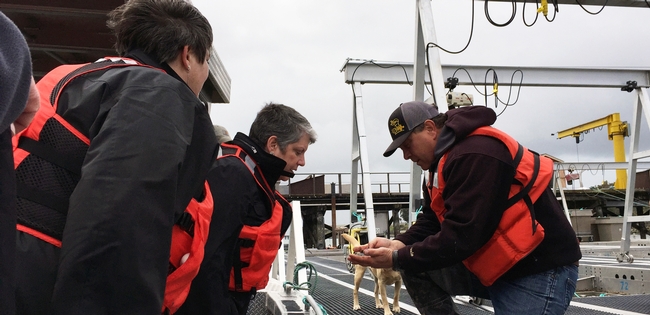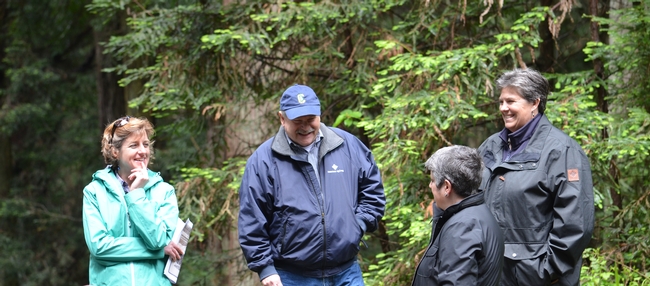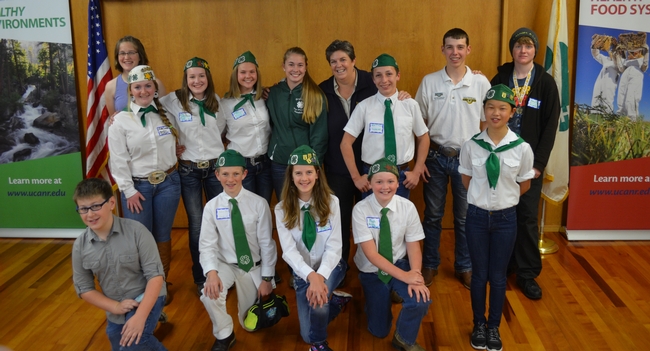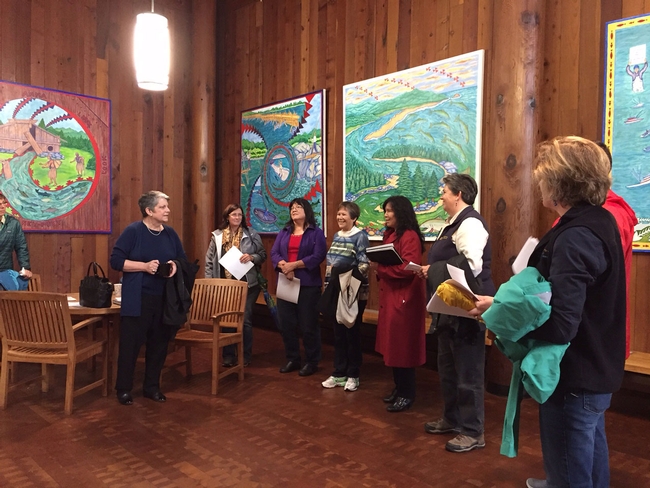Posts Tagged: Humboldt
Local ingredients are key to winning a UCCE quinoa recipe contest
Northern California cooks are encouraged to enter their best quinoa recipes in a contest next month co-sponsored by the UC Cooperative Extension Master Food Preservers Program, reported Heather Shelton in the Eureka Times-Standard.
"Quinoa is such an interesting food and there is quite a bit grown here in Humboldt," said Jennifer Bell, a UC Master Food Preserver who is working with UC Cooperative Extension and the North Coast Co-op to offer the contest.
People consume quinoa like a grain, though it isn't a true grain. It is a complete protein and considered a superfood.
Quinoa "is higher in protein than many grains and low in fat, it is relatively inexpensive, it is versatile in dishes, it is tasty, with a crunchy texture and a nutty flavor and it is gluten free," Bell said.
In the spirit of local food month, the judges encourage participants to include as many local ingredients as possible in their recipes, especially locally grown quinoa. The winners will be selected based on the percent quinoa in the recipe, taste, appearance, use of local ingredients and creativity.
The contest has five categories: appetizer, breakfast, salad, burger/meatball and dessert. Participants may enter once in each category.
Recipes for the Great Quinoa Recipe Contest must be submitted online by Sept. 10. Enough food for sampling by five judges should be dropped off between 1 and 2 p.m. Saturday, Sept. 15., at the UC Cooperative Extension office, 5630 S. Broadway, Eureka. Winners in each category will receive a crown and a prize.
The public is welcome from 3 to 5 p.m. Sept. 15 to view a short film, watch a low-sugar jam demonstration using quinoa, taste quinoa and take part in a quinoa Q&A session.
UC president sees UC research in the real world
Although UC's northernmost campus is UC Davis, the region is served by UC Cooperative Extension. The university opened its first Cooperative Extension office in Eureka in 1913, but April 27 marked the first official visit to Humboldt County by a UC president.
“I hope to show the president how local residents benefit from UC Cooperative Extension and to give President Napolitano and Vice President Humiston ideas on how the university may get more involved in solving local challenges,” said Yana Valachovic, UC Cooperative Extension director and forest advisor for Humboldt and Del Norte counties, who organized the tour.

Accompanied by Glenda Humiston, UC vice president for Agriculture and Natural Resources, Napolitano's day began at the Potawot Health Village in Arcata, where United Indian Health Services (UIHS) has a clinic and gardens of more than 35 varieties of fruits, vegetables, and medicinal plants that serve 15,000 people in Del Norte and Humboldt counties.
Because the rate of diabetes among Native Americans is twice that of non-Hispanic whites, UIHS provides an integrated nutrition education program. The work of UC Cooperative Extension advisors Deborah Giraud and Dorina Espinoza and Jessica Conde Rebholtz, nutrition educator for the Expanded Food and Nutrition Education Program (EFNEP), complements UIHS's efforts for low-income community members.
“In EFNEP, we measure behavior changes over an eight-week program and we have seen positive changes in how people manage their resources. So, we can promote healthy eating within a budget,” said Espinoza. “But unless we have an environment that supports the very changes we're promoting, the habits are difficult to sustain.”
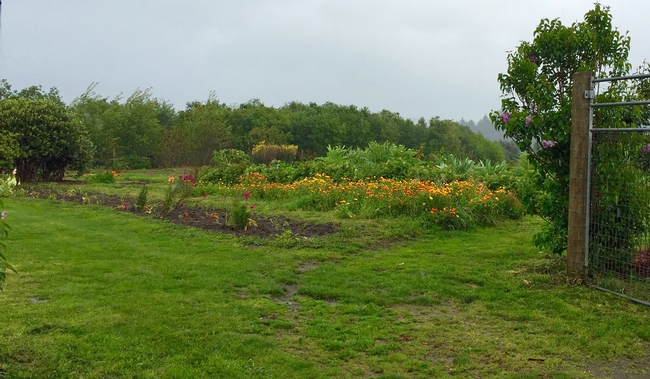
Rebholtz observed that collaborating agencies offer healthier options for their EFNEP clients and have begun replacing sugary drinks and goldfish crackers with water, fruit and vegetables as children's snacks.
“UC's statewide Nutrition Policy Institute works closely with our county-based Cooperative Extension teams and is doing the research on the effectiveness of these activities so we get this feedback loop that improves the programs,” Humiston noted.
Ensuring food security, health and sustainability are among the goals of UC's Global Food Initiative.

On the boat, Coast Seafoods Company manager Greg Dale shucked an oyster fresh from the bay. The former Arizona governor ate the oyster on the half shell.
“It doesn't get any fresher than this,” Dale said.
Dale explained how his company works with UC Cooperative Extension, UC Sea Grant and other businesses and organizations to maintain the water quality in the bay. “We all need excellent water quality for economic activity,” he said.
Dina Moore, who is married to a sixth-generation rancher in Kneeland and serves on the UC President's Advisory Commission for agriculture, told Napolitano she appreciates the expertise that Cooperative Extension brings from campus as much as the research the advisors provide locally to manage natural resources. “I think the university helps us embrace the reality of being environmentally forward-thinking,” Moore said.
Climate change is one of the challenges that UC is helping Humboldt County businesses address.
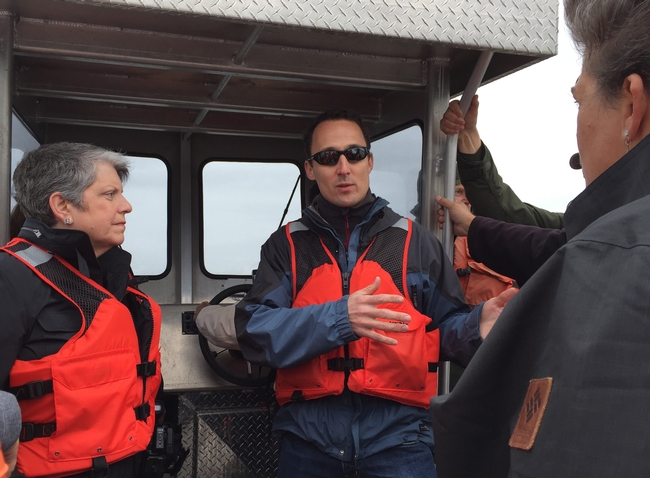
“Lower pH and carbonate saturation makes it more difficult for shellfish to acquire and assimilate carbonate from seawater to make their shells. Larval shellfish are especially vulnerable because of their small size and the fact that their shells are composed of aragonite, a more sensitive form of calcium carbonate,” Dale said. “It can affect their energy budget and survival.”
With the support of university researchers, hatcheries are monitoring the chemistry of seawater with an instrument called a Burkolator. “When the pH, and more importantly carbonate saturation, of seawater decrease to the point that it is harmful to larvae – which can occur during upwelling – hatchery managers can shut off intake pumps or add chemicals to buffer the water,” Tyburczy explained.
“We need someone like Joe to analyze the data and tell us what it means,” said Dale.
Forests provide economic and ecological benefits
After the boat ride, Napolitano and Humiston took a walk in the City of Arcata Community Forest, the largest community-owned forest in California. Mark Andre, City of Arcata environmental services director, described how the city works with UC to manage the 2,300 acres of redwoods for timber, wildlife, water quality and to sequester carbon for future generations, while simultaneously providing high-quality recreational opportunities for city residents.
“UC Cooperative Extension is important to us,” Andre said. “Community-based forestry integrates ecological, social and economic strategies. To honor the ecological emphasis we need science to inform our management decisions.

“This year we were able to coordinate several partners and bring $2.6 million dollars in conservation funding to help landowners restore their oak woodlands,” Valachovic said. “We provide a science, policy, research and educational hub for the region.”
When asked what she found most interesting about the bay and forest visits, Napolitano replied, “There's a relationship from the water to the land to the mountain and forest and there's a lot of science and biology that links those things in terms of how we think about them.”
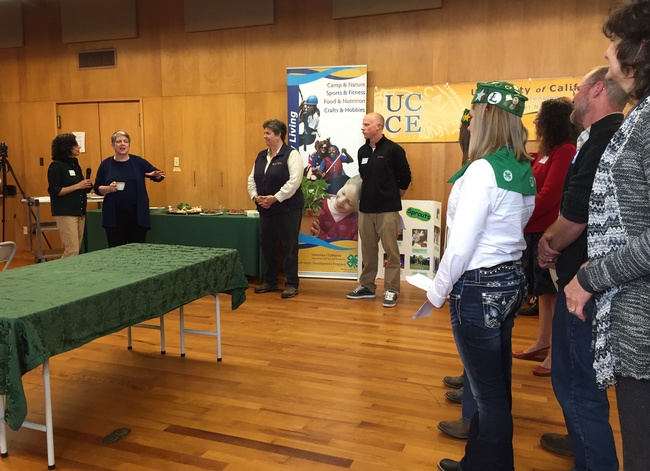
In the afternoon, UC 4-H Youth Development Program members and volunteers described for Napolitano and Humiston their projects, which ranged from raising calves to teaching safety in shooting sports to quickly solving a Rubik's cube to making videos and organizing a fashion week.
“4-H helps us build life skills,” said Molly Crandall, president of Arcata Bottom, California's oldest 4-H club, founded in 1913.
Napolitano lauded the 4-H members and volunteers for their accomplishments, and told them, “Know that through UC, and UC Extension and our Ag and Natural Resources Division, we intend to not only continue supporting 4-H, but doing evermore with 4-H because I think it's a great, great organization.”
At the end of the day, the president thanked all of the tour participants for enlightening her on what UC is doing in Humboldt County. “What I've been listening for today, and looking forward to hearing more about, is what more canthe university do,” Napolitano said. “I truly believe this is a great area of the state of California.”
Napolitano and Humiston joined in the 4-H pledge
Related links:
A UC president to visit Humboldt County for first time ever by Marc Vartabedian, the Eureka Times-Standard
Garden Tours with Homeland Security by Grant Scott-Goforth, North Coast Journal
University of California president visits Humboldt County by Taylor Torregano, KAEF-TV
UC Cooperative Extension in Humboldt County
UC president Janet Napolitano and UC ANR vice president Glenda Humiston tour Humboldt
Janet Napolitano, who is on a two-day tour in Humboldt County, is the first UC president to visit the Northern California locale, reported Marc Vartabedian in the Eureka Times-Standard. Napolitano is joined by Glenda Humiston, vice president of UC Agriculture and Natural Resources.
Napolitano and Humiston are visiting an Indian health services facility, a seafood company, a forest and a high school. UC has had a long presence in Humboldt County. Humboldt was the site of the first UC Cooperative Extension office in California, established in 1913.
“UC has had 100 years of research presence in the Arcata forest and many of their campuses are world leaders in ecological research,” said Yana Valachovic, director of UC Cooperative Extension in Humboldt County. “We think of ourselves as the eleventh campus.”
Humboldt hosts 'Let's Get Local' farm tours to celebrate centennial
A series of "Let's Get Local' farm tours are running from now till Oct. 12 to mark the centennial of UC Cooperative Extension in Humboldt County, reported the North Coast Journal. Stories about the tours also appeared in the Times-Standard and the Redwood Times.
The tours are designed to show residents a slice of Humboldt County via industries that have sustained the area. Tours cover every aspect of agriculture and other well-known local industries, the article said. For example, in June, UCCE hosted an oyster tour and on July 12, participants got a look at the grass-fed beef industry. A "Veggies and Wine Grapes Tour" takes place Aug. 11 and the Oct. 2 tour features the DG Fairhaven biomass plant.
On Sept. 13, UCCE in Humboldt holds a gala celebration to commemorate its 100-year anniversary. The festivities will go from 5:30 to 9 p.m. at the Arcata Community Center. Dress will be casual, and the event is open to the public. Find details on the Humboldt UCCE website http://cehumboldt.ucanr.edu.

An ag tour with county agricultural agent J.W. Logan, DVM, in 1928.
Humboldt County led the state in establishing UC Cooperative Extension
One hundred years ago, UC Cooperative Extension was established in Humboldt County, California, a full year before the tide swept across the United States driven by the U.S. Congress Smith-Lever Act of 1914, which created such programs to serve farmers and rural families throughout the country.
The Humboldt's pioneering UCCE program was featured in a story that appeared in the Eureka Time-Standard. The rest of the UC Cooperative Extension programs will mark their 100th anniversary next year.
"We're a 100-year-old program that's been about investing in communities and people and industries,” said Yana Valachovic, UCCE country director and advisor in Humboldt County. ”It's empowerment through knowledge, empowerment through new ideas, empowerment through best practices."
In 1913, the Humboldt timber and agriculture industries were anticipating passage of the Smith-Lever Act when they organized the first farm bureau and allocated county funding to support the extension effort. That year, Humboldt County was assigned California's first farm advisor, Andy Christiansen of Ferndale.
”We really were an economic powerhouse when you think about it,” Valachovic said. “We were quite large in population, we were producing lots of goods. So it made some sense that the University of California and Humboldt County and the farmers would all come together and say, 'alright, let's figure out how to enable and put better scientific expertise within our community, so that we can work on improving our practices and improving our production and improving our overall sustainability.'”
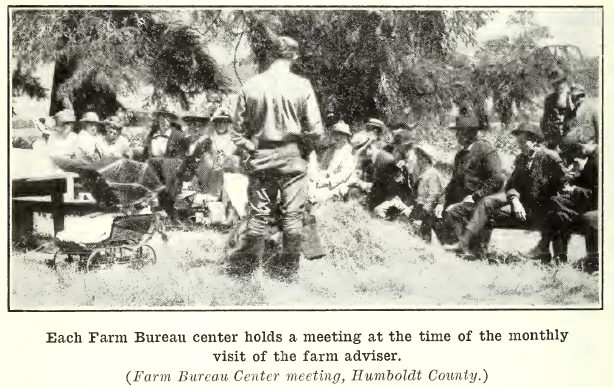
California's first farm advisor.

